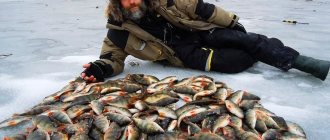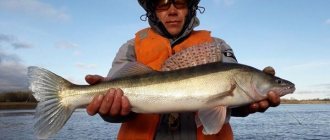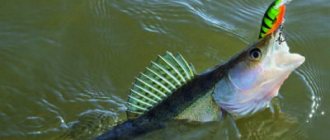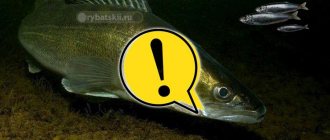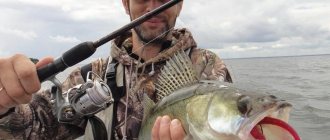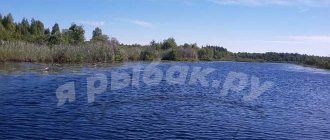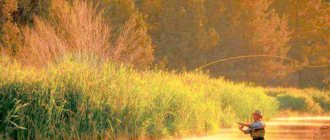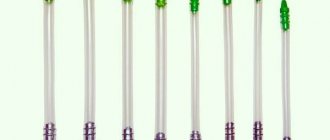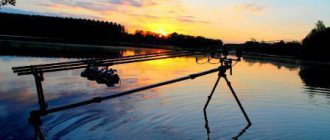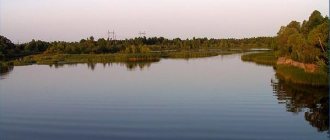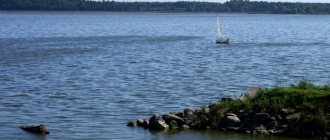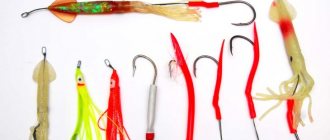The pike perch genus belongs to the ray-finned representatives of the large perch family (Percidae) and is a popular object of commercial, recreational and sport fishing. In the taxonomic rank there are several closely related species that are similar in appearance, have much in common in habits, spawning time and feeding style, but at the same time may differ in habitat and requirements for living conditions.
Pike perch: sea or river fish
In nature, a situation often arises when the same species has to adapt to a new unfavorable environment. These could be atmospheric disasters, a forced search for food, or intentional introduction by humans. A striking example of overcoming such problems is pike perch, which lives in the sea and fresh water, and is also successfully raised in large and small farms. And the most ancient jewel from the sea is pearls.
But unlike many semi-anadromous and migratory fish (chum salmon, whitefish, salmon, sockeye salmon, pink salmon), it does not have an osmoregulation mechanism and cannot quickly adapt to critical fluctuations in water salinity. That is why several forms have formed in the genus, which are oriented only to living in radically different conditions of the sea or river.
Description of the species
Almost all perciformes prefer to hunt their own kind (roach, gudgeon, crucian carp, sabrefish, juvenile carp and bream) and do this with great passion, determination and patience. This can be either an active search for a victim or waiting for her for many hours in an ambush-shelter. And if, when looking at a perch, doubts may still arise whether it is a predator or not, then the appearance of the pike perch clearly indicates its carnivorous nature:
- an elongated flat head with several rows of sharp teeth;
- large, closely spaced fangs;
- elongated muscular body, laterally compressed;
- the line of the mouth shifted beyond the far border of the eyes for a wide opening of the jaws;
- 80-90 rows of small dense scales of the ctenoid type (with a prickly ridge of spines along the edges);
- anterior dorsal fin with hard rays;
- gill cover with sharp serrations.
To learn more:
Tench: description of fish, habitats, spawning and fishing methods
The fish is characterized by a camouflage color with vertical stripes, a light belly, and darker sides and back. The specific color scheme depends on the type and living conditions.
How to choose a fishing spot
Changing seasons, as well as the water level of the reservoir, force pike perch to move to more favorable depths. Therefore, they do not have permanent habitats. They love a deep, hard bottom without silt, and choose places with underwater snags (for ambush hunting for fish). The fanged predator can often be found near large schools of small fish, which it hunts. In hot weather, it moves to the bottom, where there is more oxygen; when it is cool, it swims closer to the surface to hunt. After heavy rains, it appears under bridges and dams. This predator can also often be caught near steep cliffs.

No need to waste time on useless casts. When catching this predator, it is important to determine its habitat. To do this, you can use an echo sounder to explore the bottom, or use the old-fashioned method with a load.
River fish pike perch
Freshwater forms of the predator determine the maximum size and basic size of the entire generic population. To date, four species have been classified, living in rivers, reservoirs, flowing ponds and lakes in Russia, Europe, Asia and North America.
Common pike perch
The largest representative of the family (lat. Sander lucioperca), which is widespread in domestic reservoirs and successfully competes for food with other large predators: pike, catfish, burbot.
The average size of individuals in catches is 35-60 cm with a weight of 1-4 kg. But this is far from a record - the weight of the largest pike perch reaches 20 kg with a length of 130 cm. And now in the Kuban, Dnieper, Kama, Oka, Don, trophy specimens weighing 6-10 kg are often encountered.
The main color of the river pike perch is represented by gray-green shades, darker in the back area. 8-12 black-brown vertical stripes of irregular shape are scattered throughout the body. On the surface of the dorsal fins, separated by a small gap, there are many dark spots that form symmetrical dotted lines.
Volzhsky
The longest river in Europe, the Volga, is home, in addition to the ordinary form of the predator, to a local species (lat. Sander volgensis), which has two equivalent names: Volga pike perch and bersh. This perch taxon is characterized by historical dwarfism (dwarfism), the absence of large fangs, a shortened snout and larger scales (70-75 rows). Dark vertical stripes (8 pieces) contrast well with the main gray-green color and are distinguished by their regular shape.
The maximum size of the bersh does not exceed 3-3.5 kg with a length of 45-50 cm. Most of the livestock are represented by medium-sized individuals 0.6-1.0 kg (20-35 cm). This significantly complicates the survival of the species due to fierce competition for food (fry 5-10 cm) with numerous perch.

Canadian
This species (Sander canadensis) is common in fresh water bodies of North America. It is especially abundant in Canada, where it has successfully acclimatized in flowing lakes and rivers of the Atlantic Ocean basin: Erie, Bay du Nord, Gander, Main River, Restigouche, Champlain. The yellowish-greenish body is covered with numerous dark spots. Due to its ability to completely merge with the bottom, the fish is often called sandy pike perch. It grows up to 3-4 kg, but smaller individuals weighing 1-2 kg prevail in populations. Lives up to 17-18 years.
To learn more:
Types of carp: mirror, koi and others
Lightfeather
A large North American species (lat. Sander vitreus), living in rivers and lakes of Canada and throughout the United States. The fins are painted in delicate golden tones. The main colors of the lateral part of the body are represented by chestnut and amber-lemon shades, which served as a pretext for the emergence of an alternative name - yellow pike perch. The back is dark with an olive-brown tint. The fish grows up to 10-11 kg with a length of over a meter. It is distinguished by a wide variation in the timing of puberty: for the southern regions - 2-4 years, for the northern - 8-10.

Records for pike perch for all fishing years (in different countries)

Here are a few more pike perch records (from the history of fishing):
- Pike perch about 40 kg Volga River Narimanovo, 1996 (from Sysoev V.A.)
- Pike perch 1.32 m, 20 kg (Neelov).
- Zander. Belarus record length 1.3 m weight 20 kg age 15 years
- Zander. Austrian national record 18.37 kg
- Walter mentions zander from Germany weighing 18 kg and 130 cm long (Berg), 19 years old (Collins Guide, 1997).
- In the Dnieper delta there are pike perch weighing up to 17 kg.
- Kessler (1864), also from the words of fishermen, speaks of pike perch weighing 16 kg from the southern part of Lake Ladoga.
- The largest specimens of pike perch reach more than 1 m in length and weigh up to 16 kg (in the Ili River and its tributaries).
- Mozhaisk reservoir Troitsa-Goretovo-Ovsyaniki district. I also caught 16 kg pike perch there. ( [email protected] )
- Zander. 16 kg. An amateur fisherman, a resident of the Krasny Kamen massif (Dnepropetrovsk), caught it in July 1995 in the nearby Dnieper Bay, this is the absolute record of the Dnieper region among commercial, and even more so amateur, catches of this predator. (Roman Novitsky, ichthyologist) (found on the Internet from the site fish-news.teia.org).
And to be honest, the niches of the rivers and lakes have been “crashed”, and the fish are now smaller. You will no longer find good trophy fish in the vast Russian waters. Neither the authorities nor the people themselves really respect what they have nearby - a lot and for free... For now it’s free...
What do you say, friends?
Follow my new publications - it will be even more interesting!
Sea fish pike perch
It has a fairly limited habitat area, which includes the Caspian Sea, some areas of the Black and Azov Seas. This type of predator (lat. Sander marinus) is characterized by various options for the placement of dorsal fins, modest size (up to 2-2.5 kg), neutral light gray color and 12-13 transverse stripes. The Caspian sea pike perch has the standard dorsal fins for the family with a small gap. In the population living in the Black Sea, they touch each other, which makes the appearance of the fish as unique as possible.
Black Sea pike perch is less picky about the level of water salinity. It feels equally good far from the coast (13-18 ppm) and near freshwater estuaries, bays, and river mouths (5-6 ppm). Its relative in the Caspian Sea avoids such conditions, trying to constantly stay in layers with a maximum salt content of 10-13 ppm.
Where pike perch live and are caught
Large perch do not tolerate oxygen deficiency in water and high levels of suspended matter, pollutants, and methane. That is why they prefer flowing, clean reservoirs with a hard bottom and an abundance of springs and springs. Rare exceptions can be considered ruffes and perches, which are less demanding on the environment due to their small size and often successfully live and spawn in ordinary ponds, where there are a lot of small carp fish.
Pike perch are caught in deep lakes and rivers with moderate to fast currents throughout central Russia, including:
- northern regions (Novgorod, Leningrad, Pskov regions);
- the south of the Black Earth Region (Tambov, Voronezh, Rostov, Belgorod, Kursk, Lipetsk);
- eastern Volga region (Saratov, Samara, Kirov, Mordovia, Ulyanovsk, Penza).
To learn more:
Amur catfish - description and characteristics of fish
The predator is resistant to low temperatures, so it can be found at the very edge of the northwestern border of the European part of the country. It is found in the Neva, Ladoga, Sumozero, Yanisyarvi, Ohtanyarvi, Sandal. In addition to the Baltic basin, the fish forms numerous populations in rivers and tributaries that supply water to the Black and Caspian Seas. In the east, the range is limited by the Ural River. In addition, pike perch lives in reservoirs, for example Rybinsk, Saratov, Krasnodar, Ivankovsky, Sheksninsky.
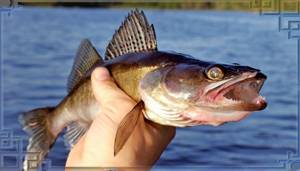
In the sea, it is best to look for a predator in the central and southern parts of the Caspian Sea, in the north-west of the Black Sea coast, in the area of the Crimea Peninsula, near the Dnieper delta and the Southern Bug. Sea pike perch prefers a sedentary lifestyle at moderate depths of 25-40 meters with a clean bottom (stone, pebbles, sand). It is quite problematic to independently detect concentrations of predators. Tips from local fishermen will help out.
How to find pike perch on the river
Perches love fresh water with a slight current, so they often settle in holes, piles of stones and snags near a riverbed, riffle, edge or ridge. Shallow water (1-1.5 meters) and coastal thickets are almost never promising fishing grounds. The cautious predator comes here only in the early morning or late evening.
That is why you need to look for pike perch on the river in open water and at significant depths (from 3-5 meters). In summer, cool bottom layers deserve special attention. In autumn and spring - average, which have time to warm up a little in the sun.
If a pike bite occurs, it is better to change the place, since these two species try to avoid each other due to fierce food competition.
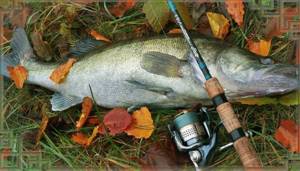
A resident of Novosibirsk caught a giant pike perch, but lost to her husband
Two huge pike perch were caught by the Severina spouses from Novosibirsk. Last week my wife distinguished herself. Larisa caught a fish, the size of which surprised even avid fishermen. Many still do not believe that such specimens are found in the Ob Sea.
“This is, first of all, luck,” says 36-year-old Larisa Severina. — I’ve been fishing since I was 15 years old and, believe me, I know what I’m talking about. Catching such a fish is pure luck. My husband and I were fishing in the area of the village of Spirino. That's where it happened. Although Evgeniy didn’t show it, I understood that his male pride had accidentally been touched. He decided to catch an even bigger pike perch. I didn’t believe there were more, but I was wrong.
08/31/2016 photo
A resident of Novosibirsk caught a huge 25-year-old pike in the Ob
This weekend the Severin couple went to Spirino again. Using an echo sounder, we studied the bottom topography and swam a boat from place to place. “The weather is wonderful, in all respects it is very similar to what it was on Tuesday, when I distinguished myself,” says Larisa. “We went out to sea and my husband got a hold.” A little more and “let’s go for a ride.” The result was impressive - the pike perch in the boat was larger in appearance than mine. On the shore I noticed that the pike perch had blue fins. Very beautiful fish. We come home, weigh it - 8,260! The weight is taken. My husband caught me in a family competition. We made khe and kebab from two fish.”

Surprisingly, the giant pike perch caught are not the largest in Larisa Severina’s account. In 2011, the girl caught a carp that weighed almost 18 kilograms. This was a record for Siberia. The magazine “Fish with us” wrote about Larisa, which found out that the carp caught near Novosibirsk is the second largest in Russia.
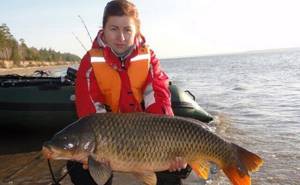
“Forty minutes of struggle! When they dragged it into the boat, they argued about how much it weighed,” continues Larisa. “The assumptions were about 10-12 kilos, and when they started taking pictures on the shore and with great difficulty I tore it off the ground, it immediately became clear that the fish was much heavier. Well, we already weighed the house and were pleasantly surprised by the weight - 17 kilograms 600 grams.”
According to ichthyologist, employee of the Institute of Systematics and Ecology of Animals of the SB RAS Elena Yadrenkina, pike perch is one of the most desirable prey of the amateur fisherman. Firstly, because fishing for pike perch is a highly sporting activity; and secondly, the meat of this fish is considered a delicacy.
“Pike perch have powerful fangs alternating with smaller teeth sitting next to them. The color is dominated by softer gray tones. Of the prickly fish, pike perch is the largest predator,” says Elena Nikolaevna. — Record holders reach one meter and weigh 10-15 kilograms. The specimen caught by Larisa and her husband is certainly a record for our area. This, one might say, is not a pike perch, but a judge!”
Nutrition and reproduction
The diet consists exclusively of animal feed. Juveniles consume aquatic invertebrates, worms, crustaceans, leeches, and eggs. Growing and large pike perch eat mainly frogs, crayfish and fish. In search of food, regular migrations take place along the same paths and places. During the current, the predator often waits for prey in a shelter, after which it suddenly attacks. The feeding activity of fish continues around the clock throughout the year, with the exception of spawning.
When does pike perch spawn?
The breeding season occurs in April-May, when the water heats up to a temperature of +12-13°C. Mature individuals participate in the process, starting at the age of 3-4 years. Shallow water areas with a bottom littered with roots, snags, and stones are selected as spawning grounds. In such places, the female forms a clutch of 200-500 thousand yellow eggs with a diameter of 1-1.5 mm, which are tightly attached to the substrate. A special feature of pike perch spawning is the nesting method. To protect the eggs from being eaten by other aquatic inhabitants, the male remains near the nest and guards it until the larvae hatch.
To learn more:
The royal fish of the sturgeon family - sterlet
The initial food is zooplankton. But very soon the fry grows to 3-6 cm in length and already hunts the offspring of other fish. If there is no suitable food nearby, a mass death of young animals begins. This largely explains why, given the high fertility of the species, the population of pike perch is never too large. On the contrary, in many reservoirs there is always an acute shortage of this representative of perch.

February pike perch
It's not so much about the low winter season. Here on the Cheboksary Reservoir, at the very beginning of the deep winter, at the end of December - in January, pike perch is caught excellently, perhaps better than at any other time in the winter season. But the last month of winter and the first month of spring are not impressive with catches.
TRANSITION PERIOD
Fishermen rarely reach pike perch on the first ice. Firstly, the ice over the pike-perch areas is not yet strong enough, and other prospects, such as pikes and girdles, beckon. But pike perch are gathered in schools and have a good appetite.
They remember pike perch only after the hottest battles on the first ice have subsided. Throughout January, the fanged predator takes the rap for the lack of attention from anglers in the first ice. At this time, pike perch is concentrated in fairly large schools, which, in fact, determines good catches in a school of predators due to fierce competition. The flocks thin out quickly, and from the outside it looks quite wild. A dense cloud of fishermen gathers on a long stretch and moves noisily behind the flock with cackling sounds and the grinding of ice screws. At first, predators are caught with spoons, a little later, when the school becomes a little thinner, they switch to sprat and jig. By March, schools of pike perch are quite broken up, and individual groups (2–4 individuals each) are dispersed along the edges and turns of the riverbed. And so on until the last ice, when the pike perch will again gather in schools and concentrate closer to the spawning and feeding areas.
Thus, the end of February and the first half of March is a transition period. The flocks are broken, and the pike perch are scared. And how to look for pike perch in such conditions, how to react to changes in its moods and how to choose bait?
MARCH DISLOCATIONS
Schooling deep-winter pike perch stays at solid depths and comes out to the edges or shallows to hunt. That is, in most cases, the greater depth is the parking place, and the shallower depth is the feeding place. In the first month of spring, it is almost impossible to meet pike perch at deep and shallow depths; it always stands at the average depth for the Volga - up to 5-6 m.
However, the passion for edges and snags has not been canceled. The lower reaches of the Cheboksary reservoir are generally monotonous. A steep right bank, from which there is immediately a solid depth, then a deep-water fairway, a run aground (the islands that were before the flooding after the construction of the hydroelectric power station) and a generally flat depth with local holes to the left sloping bank.
And if at the beginning of winter pike perch mostly stays on the right half of the reservoir, then at the end of February–March - on the left. Many pikeperch fishermen continue to look for fanged fish in their previous sites, and this is their main mistake. Unknocked predators strive to get away from noisy crowds of fishermen and they go towards the left bank, plus everything - closer to the upcoming spawning sites. And most fishermen are content with, at best, a medium-sized bersh.
At the level depths of the left bank, groups of pike perch do not concentrate on the empty bottom; it is easier to find them in dumps in holes or in snags.
However, finding snags does not mean finding pike perch. There are not very many fanged predators, but there is plenty of space, so pike perch are picky about the quality of snags. Single pike perch prefer separately lying snags; single stumps are ideal in this regard. In addition, you need to take into account the age of the driftwood.
If the tree begins to rot and release gas into the water, the pike perch will rush to leave these snags. For this reason, in many old reservoirs one can observe indifference (even withdrawal) of pike perch from snags. And all because of rotting.
At the Cheboksary Reservoir, this trend is already beginning to be visible. Every pike perch stop is either an edge or a hole, and only occasionally - snags.
CURRENT FACTOR
Pike perch is a lover of running water, so it’s not worth discounting such a factor as current. When a current appears or disappears, conditions change, and as a result, the mood of the predator changes. And this is a very offensive phenomenon. As soon as you select the wiring, the bait, you find a place - and a current appears, which is why the pike perch is removed from the place. That's how it was last weekend. Early in the morning I attacked a small group of pike perch. With four bites I caught two pike perch, and the current was released. There seems to be no sign of pike perch.
During periods without a current, pike perch can be caught quite high from the bottom, while during currents, pike perch presses tightly to the bottom and does not show its nose higher than half a meter from the bottom.
If there is no current, then the pike perch can find itself on any side of the snag, but as soon as the current appears, the pike perch stands behind the snag, as if hiding from the current. However, this situation does not prevent him from attacking the bait in any other place. If you know how to interest a pike perch, it will leave the parking lot and approach the bait.
Pike perch feels best in weak and medium currents; it will not be easy to catch it in strong currents. The pike perch itself, of course, is not going anywhere, but getting the bait to the bottom even at medium depths will not be easy.
At the beginning of spring, the strength of the current is practically no different from the deep-winter one, but later differences begin to be felt. The hydroelectric power station discharges more and more water, or, on the contrary, it “stores” it for quite a long time, without releasing the rising water, and then quickly releases it. The most convenient moment for catching March pike perch is the period of water accumulation.
LURE
During this period, most continue to catch pike perch using sprat. In the deep winter, the pike perch, of course, was periodically capricious, and the sprat on the jig was just right, both with an active bite and with a weak one.
I prefer to fish with spoons in the last month of the ice fishing season. Mostly because the experience gained during this period turns out to be very valuable, because it is now more difficult to catch with a spoon and therefore much more interesting than with a sprat.
Despite the general shyness and sparseness of the schools, pike perch are not at all alarmed by large spinners with wide-amplitude action. Rather, on the contrary, pike perch like long pauses when the spinner glides very smoothly after the swing.
But the predator, in its own style, does not accept wide-bodied baits, so I prefer to use narrow and long spoons. The peculiarity of this bait is that it is thin and does not have a lead solder. To a large extent, this is what achieves the long pause.
At this time, I prefer to make smoother and longer strokes. I have repeatedly noticed that this type of wiring works better for pike perch in the transition period.
SITUATION AT THE RESERVOIR
Ways to catch pike perch
Natural and artificial baits are used, both in the form of live bait (minnow, crucian carp, roach, dace, bleak), and various types of rotary and oscillating spoons, wobblers, and jig heads. In the winter, especially in January, excellent results are demonstrated by using live bait and vertical fishing for pike perch from the ice using a balance beam, which is made in the shape of a fish and, when played correctly, realistically imitates the movements of a fry. The most catchy baits are yellow, golden, red or combinations thereof.
Spring and autumn fishing for pike perch require the use of a spinning rod equipped with a spoon or polyurethane foam fish. Shore jig is also consistently highly effective. Summer perch fishing is characterized by an active search for fish in the bottom, middle and upper layers of the reservoir. Wobblers with a length of 3-6 cm with different indicators of depth and buoyancy, for example, the Duel Hardcore (50 SP) or Barra Magnum models, are best suited here.
To fish for pike perch even more successfully from a boat or from ice, you need to use an echo sounder, which will quickly provide important information about the depth, features of the bottom topography and the presence of fish. In any season (until the reservoir freezes), you can use live bait bait, consisting of a short rod (up to 3 m), a spinning reel and a sinker (up to 60 g). The main line (80-100 m) has a thickness of 0.3-0.35 mm. Lead - 0.22-0.25 mm. In addition to live bait, bait for pike perch can be a fat leech, several worms, a piece of fish, or a frog.
Features of fishing at different times of the year
With the change of seasons, the fanged predator changes its habitat and the amount of food consumed:
- in the spring, before spawning, he fattens up - he actively hunts for fish, then fishing with a spinning rod is effective, it is well caught with silicone baits and wobblers;
- in May, when spawning begins, he almost does not hunt, there is little biting at this time, especially since fishing for pike perch is then prohibited;
- from the beginning of summer it begins to have a post-spawning glutton, but the fanged one is picky in its prey due to the abundance of different food;
- During the day, due to the heat, it goes to greater depths, so the most effective would be night fishing from a boat using a spinning rod, float or bottom gear;
- when there is a cold snap after the heat in summer or before rains, the bite can reach the level of zhora;
- in the fall, he again begins to feed his masses, so he begins an active hunt for prey, but one that lives at depth, so then bottom gear and spinning are effective;
- when cold weather sets in, the fanged fish moves to wintering pits, fishing at this time becomes ineffective, but if the days are sunny, then it is caught on balance beams and vertical spoons.
The hooks must be sharp, chemically sharpened, because the palate of this predator is very hard.
